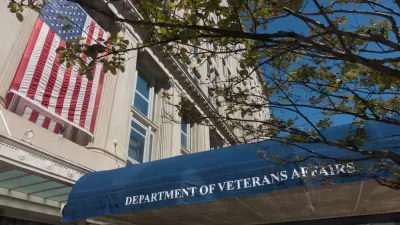Federal funding to end veteran homelessness has had a real impact, but a nationwide shortage of affordable housing could make its success temporary.
By Maria Foscarinis
In 2010, the Obama administration announced a Federal Plan to End Homelessness. Developed by the U.S. Interagency Council on Homelessness (USICH), the plan laid out an ambitious agenda focused on addressing the causes of homelessness. Called Opening Doors, the plan set four specific goals, one of which was to prevent and end homelessness among veterans in five years.
In November 2013, the Department of Housing and Urban Development (HUD), in its Point-in-Time (PIT) count of the homeless population, reported that 57,849 veterans were homeless on a given night in January 2013—a 24 percent decrease since 2009. By January 2014, two cities—Phoenix and Salt Lake City—had declared that they had ended chronic homelessness, a condition defined by HUD as presence of a disabling condition and three or more periods of homelessness within a year, for veterans.
These reports are striking, but should be viewed with caution. To start, the count is far from scientific, and has been criticized by me as well as others for gaps that include people in facilities who will have nowhere to go upon release and the “hidden homeless,” or individuals who are doubled up in homes or couch surfing.
Indeed, the veterans’ numbers may merit even more reservation: according to the plan and its subsequent updates, the baseline numbers against which progress is measured have undergone several revisions. HUD’s original 2009 PIT count number of 59,390 homeless veterans was later adjusted to 75,609; however, the fact sheet currently linked by the VA on its website states that in 2009 there were 107,000 homeless veterans—the number the plan stated it would adopt as its baseline. Additionally, the two cities’ results concern only the subpopulation of chronically homeless veterans...
FULL STORY: Without More Affordable Housing, Veteran Homelessness Will Return

Planetizen Federal Action Tracker
A weekly monitor of how Trump’s orders and actions are impacting planners and planning in America.

San Francisco's School District Spent $105M To Build Affordable Housing for Teachers — And That's Just the Beginning
SFUSD joins a growing list of school districts using their land holdings to address housing affordability challenges faced by their own employees.

The Tiny, Adorable $7,000 Car Turning Japan Onto EVs
The single seat Mibot charges from a regular plug as quickly as an iPad, and is about half the price of an average EV.

With Protected Lanes, 460% More People Commute by Bike
For those needing more ammo, more data proving what we already knew is here.

In More Metros Than You’d Think, Suburbs are Now More Expensive Than the City
If you're moving to the burbs to save on square footage, data shows you should think again.

The States Losing Rural Delivery Rooms at an Alarming Pace
In some states, as few as 9% of rural hospitals still deliver babies. As a result, rising pre-term births, no adequate pre-term care and "harrowing" close calls are a growing reality.
Urban Design for Planners 1: Software Tools
This six-course series explores essential urban design concepts using open source software and equips planners with the tools they need to participate fully in the urban design process.
Planning for Universal Design
Learn the tools for implementing Universal Design in planning regulations.
Smith Gee Studio
City of Charlotte
City of Camden Redevelopment Agency
City of Astoria
Transportation Research & Education Center (TREC) at Portland State University
US High Speed Rail Association
City of Camden Redevelopment Agency
Municipality of Princeton (NJ)





























